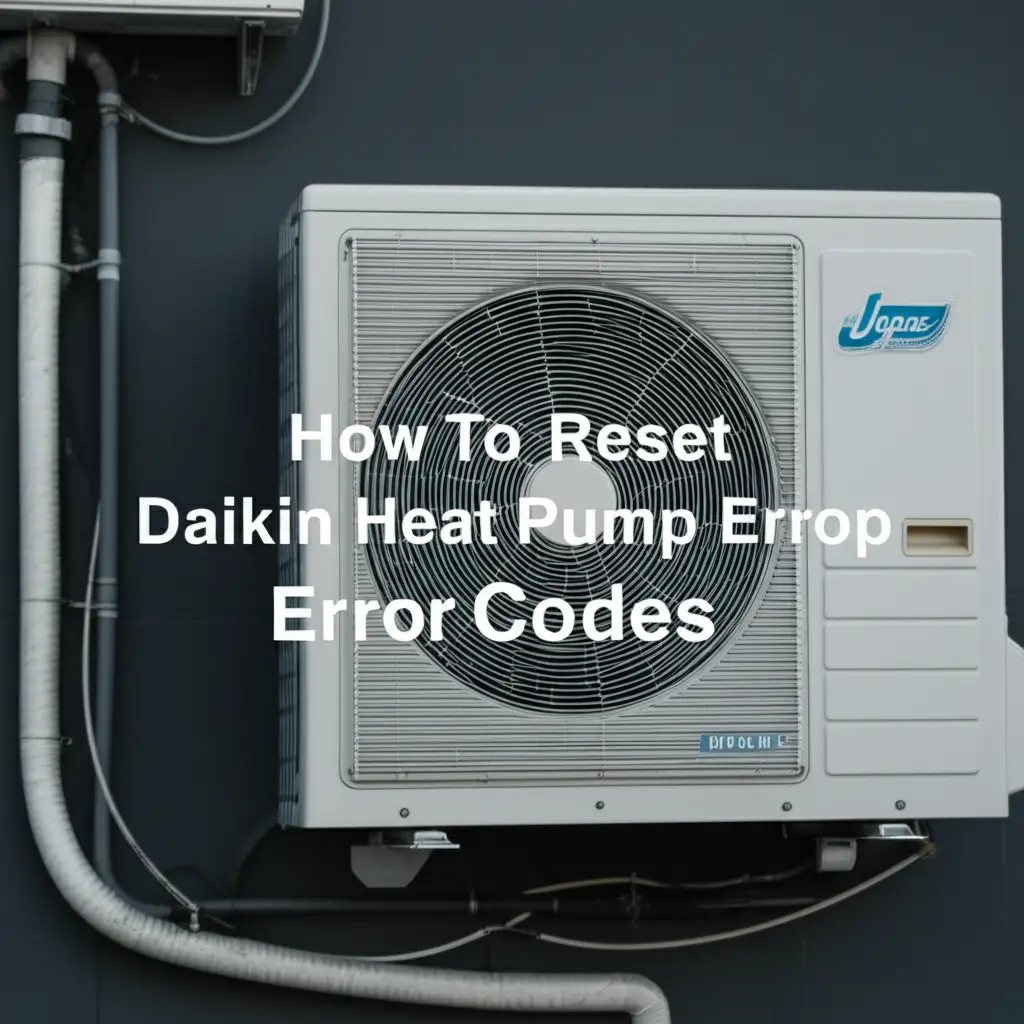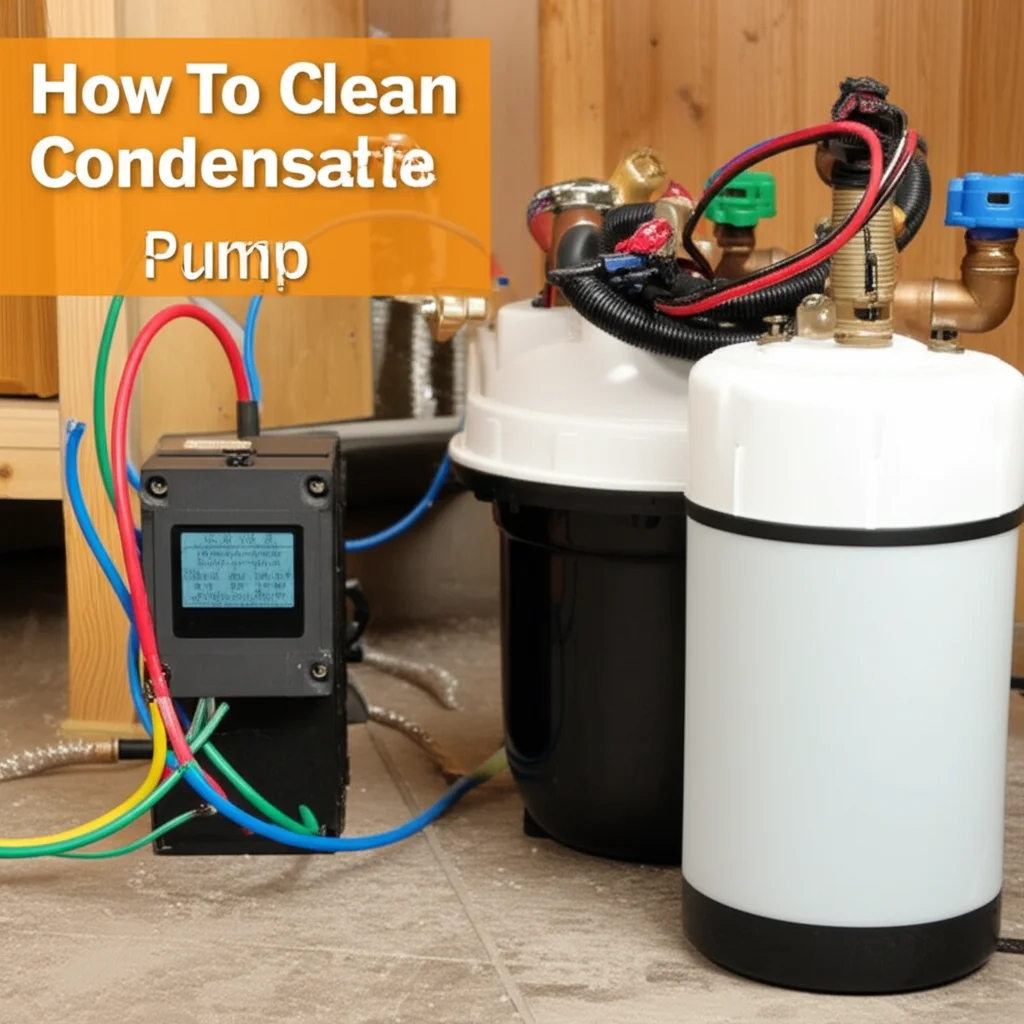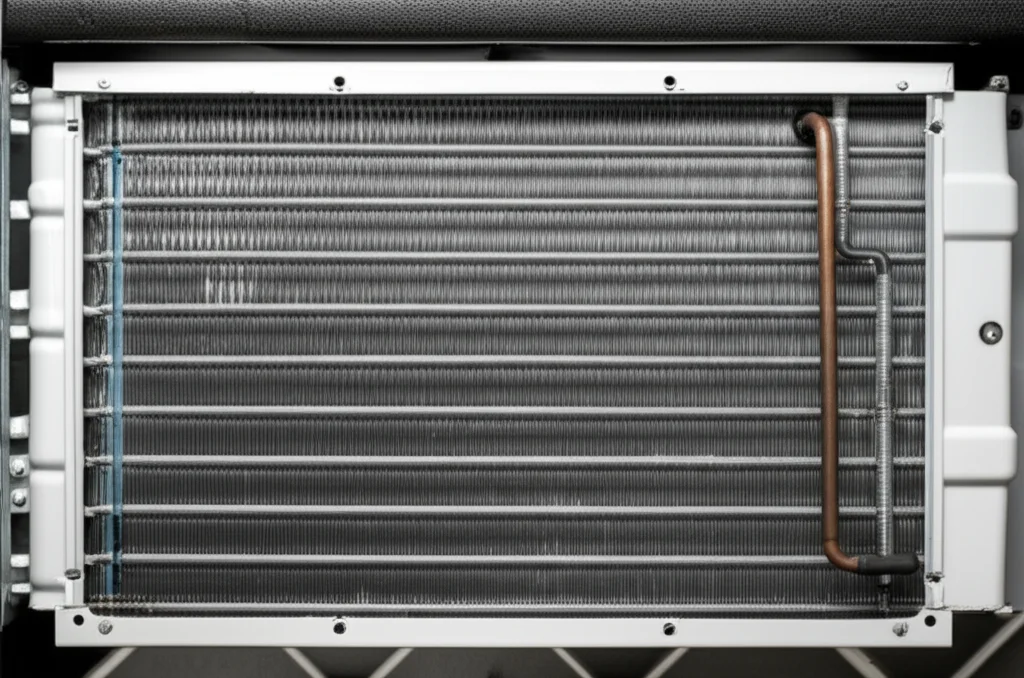· Todd Martin · HVAC Maintenance · 18 min read
How To Reset Daikin Heat Pump Error Codes

Resetting Daikin Heat Pump Error Codes: A Comprehensive Guide
Has your Daikin heat pump flashed an unexpected error code, leaving you wondering what to do? You are not alone. Many homeowners encounter these digital messages, which can seem daunting at first glance. However, understanding how to reset Daikin heat pump error codes is often simpler than you think. It can save you time, money, and the inconvenience of a service call.
This guide helps you demystify these codes. We will explore why errors appear and provide step-by-step instructions for various reset methods. We will also discuss common error codes and their simple fixes. By the end, you will feel confident in tackling many Daikin heat pump issues yourself. This article will empower you to restore comfort to your home quickly.
Takeaway
- Power cycle: Turn off your Daikin heat pump at the circuit breaker for 5-10 minutes, then turn it back on. This is the most common and effective reset.
- Remote control reset: Use specific button combinations on your Daikin remote or controller to clear display errors.
- Identify codes: Consult your owner’s manual to understand specific error codes before attempting advanced troubleshooting.
- Perform basic checks: Ensure filters are clean, outdoor units are clear, and power supply is stable.
- Call a professional: If errors persist or indicate serious malfunctions, contact a qualified HVAC technician.
To reset Daikin heat pump error codes, typically power cycle the unit by turning off its dedicated circuit breaker for 5-10 minutes, then restoring power. This often clears temporary glitches. For specific codes, consult your owner’s manual for remote control reset procedures or troubleshooting steps.
Understanding Daikin Heat Pump Error Codes
Your Daikin heat pump is a sophisticated system. It has internal sensors and diagnostics. When something goes wrong, the unit displays an error code. These codes act as messages. They tell you what part of the system is experiencing a problem.
Error codes help protect your unit from further damage. They can also prevent minor issues from becoming major repairs. Understanding these codes is the first step toward a successful reset.
Why Error Codes Appear
Error codes appear for many reasons. They can be simple, like a dirty air filter. They can also indicate more complex problems, such as a sensor malfunction or a communication breakdown. Sometimes, a temporary power surge or outage can trigger an error. The system might just need a simple reset to clear this.
The heat pump’s internal computer monitors its operation. If a parameter falls outside its normal range, it flags an error. This prevents the unit from operating in a way that could cause damage. It is the system’s way of telling you, “Hey, I need some attention here!”
Common Daikin Error Code Types
Daikin error codes typically start with a letter and are followed by numbers. The letter often indicates the general category of the fault. For instance, ‘U’ codes often relate to voltage or communication issues. ‘H’ codes might point to sensor problems. ‘E’ codes often mean something is wrong with the indoor unit.
Each model may have slightly different codes. Always refer to your Daikin heat pump owner’s manual. This manual provides a detailed list of error codes specific to your unit. It also offers initial troubleshooting steps for each one. This helps you figure out if the problem is minor or serious. If your Daikin heat pump is not working, an error code can provide valuable insight into the cause. Why Is My Daikin Heat Pump Not Working can offer additional context.
The Basic Reset: Power Cycling Your Daikin Unit
The simplest and most effective way to reset a Daikin heat pump error code is through power cycling. This method is similar to restarting your computer or smartphone when it acts up. It clears temporary glitches from the system’s memory. It allows the unit to re-initialize all its components.
I have personally used this method countless times. It fixes many common issues without needing a technician. This is always my first step when I see an error code.
Step-by-Step Power Cycle Instructions
Power cycling your Daikin heat pump is straightforward. Here are the steps to follow:
- Locate the Circuit Breaker: Find the electrical panel in your home. This is usually in your garage, basement, utility closet, or laundry room.
- Identify the Correct Breaker: Look for the breaker labeled for your “Furnace,” “HVAC,” “Heat Pump,” or “Air Conditioner.” It might be a double-pole breaker (two switches connected together).
- Turn Off the Power: Flip the circuit breaker switch to the “OFF” position. If your heat pump has a separate disconnect switch near the outdoor unit, turn that off as well.
- Wait Patiently: Leave the power off for at least 5 to 10 minutes. This ensures all residual power drains from the system’s capacitors and control boards. This waiting period is crucial for a complete reset.
- Restore Power: Flip the circuit breaker back to the “ON” position. Turn on any outdoor disconnect switches you may have turned off.
- Monitor the Unit: Observe your Daikin heat pump. The error code should now be gone from the display. The unit should attempt to restart its normal operation.
When to Use This Method
You should use power cycling as your first attempt to clear any Daikin heat pump error code. It is especially effective for codes that appear after:
- A power outage or surge.
- A brief interruption in operation.
- No obvious physical problem with the unit.
This method often resolves communication errors or sensor glitches that are not due to a physical fault. It’s a quick, safe way to see if the error was just a temporary hiccup. If you are experiencing issues like your Daikin heat pump turning off, a simple power cycle can sometimes resolve the problem. For more information, read about Why Does My Daikin Heat Pump Keep Turning Off. Similarly, a power cycle can often help if you need to How To Reset Heat Pump After Power Outage or How To Reset Daikin Air Conditioner After Power Outage.
Controller-Based Reset Methods for Daikin Systems
Beyond the basic power cycle, many Daikin heat pumps offer reset functions through their remote controls or wall-mounted thermostats. These methods are designed to clear specific display errors. They can also help initiate diagnostic modes. The exact procedure varies significantly depending on your specific Daikin model and controller type.
Always have your owner’s manual handy when trying these methods. It provides the precise button sequences. My own experience with different Daikin remotes shows that a quick check of the manual saves a lot of frustration.
Using Your Remote Control for Resets
Daikin remote controls often have hidden functions. These functions allow you to access and clear error codes. Here are some common approaches, though yours may differ:
- Error Code Display Mode: Many remotes have a “Check” or “Test” button, or a combination of buttons (e.g., “Cancel” held for 5 seconds). Pressing these will cycle through recent error codes on the remote’s display. This helps you identify the code before trying to clear it.
- Forced Operation/Reset: Some remotes allow a “forced fan operation” or a “test run.” While not a direct “reset” button, initiating such a mode can sometimes clear a lingering fault. This acts like a system refresh.
- Clear Button: A few Daikin remotes might have a dedicated “Clear” or “Reset” button. If present, simply pressing this button (sometimes requiring a long press) will clear the displayed error. This is the simplest controller reset.
- Combination Press: Often, you need to press and hold two buttons simultaneously. Common combinations include “MODE” + “FAN,” “ON/OFF” + “CHECK,” or “TEMP UP” + “TEMP DOWN.” The manual will specify the exact pairing for your model.
After initiating a reset through the remote, the display should show “00” or a similar indicator that no error is present. The unit might then attempt to resume normal operation.
Advanced Controller Functions
Daikin wired wall controllers also provide reset and diagnostic capabilities. These are often more comprehensive than handheld remotes.
- Service Menu Access: Some wall controllers have a hidden service or installer menu. Accessing this might involve pressing a specific sequence of buttons (e.g., “MENU” then “RETURN” multiple times). Within this menu, you might find options to:
- View Error History: See a log of past error codes, which helps diagnose intermittent issues.
- Clear Errors: A specific function to clear active or historical errors.
- Test Run Modes: Run various system components (compressor, fans) in a test mode to confirm functionality after a reset.
- Controller Reset Button: Some wall units have a small, recessed “Reset” button. You might need a pen or paperclip to press it. This performs a localized reset of the controller itself. It may or may not clear a system-wide error.
- Power Down from Controller: For some systems, you can fully power down the unit from the controller. This acts like a soft power cycle.
Always consult your Daikin controller’s specific manual for these advanced functions. Incorrect use can sometimes lock out features or create new problems.
Identifying Common Daikin Error Codes and Solutions
While I cannot list every single Daikin error code (they number in the hundreds and vary by model), I can provide examples of common types and general solutions. Knowing these can help you act quickly. Remember, your owner’s manual is the definitive source for codes specific to your unit.
When you see an error code, the first step after a power cycle is to look it up. This will tell you what system component is reporting an issue. My own Daikin manual is well-worn from these lookups!
Frequently Encountered Errors (Types of Issues)
Instead of specific codes, let’s look at common categories of errors you might encounter:
- Communication Errors (often ‘U4’, ‘UF’): These indicate a problem with the electrical signal or communication line between the indoor and outdoor units, or between different circuit boards. It could be a loose wire, interference, or a faulty board. If your Daikin heat pump is not working, a communication error might be the culprit.
- Sensor Errors (often ‘H9’, ‘J3’, ‘E5’): Heat pumps rely on many temperature and pressure sensors. If a sensor fails or gives an incorrect reading, the unit may shut down. This protects the system from operating outside safe parameters. For example, an H9 might indicate an outdoor air temperature sensor issue.
- Fan Motor Errors (often ‘A3’, ‘C4’): Problems with the indoor or outdoor fan motors can cause errors. This could be due to a motor failure, a blocked fan, or a wiring issue. If your Daikin heat pump is so noisy, a fan motor error could be part of the problem. Why Is My Daikin Heat Pump So Noisy offers insights into noise issues.
- Outdoor Unit Malfunctions (often ‘F3’, ‘L5’): These codes point to issues with components in the outdoor unit, such as the compressor, inverter, or refrigerant levels. An F3 might signal a discharge pipe temperature error, while an L5 could indicate high discharge pressure due to a faulty compressor. If your Daikin heat pump keeps freezing, this could be related to refrigerant issues. See Why Does My Daikin Heat Pump Keep Freezing for more information.
- Indoor Unit Malfunctions (often ‘A1’, ‘C9’): These relate to components within the indoor unit, such as the drain pump, filter issues, or internal sensors. A C9 might indicate a thermistor error in the indoor unit. If your Daikin heat pump is blowing cold air when it should be heating, an indoor unit malfunction might be the cause. More on this topic is available at Why Is My Daikin Heat Pump Blowing Cold Air.
Simple Fixes for Specific Codes (General Troubleshooting)
For some common error types, you can attempt simple fixes after identifying the code:
- For Communication Errors (U4, UF):
- Power Cycle: Always try this first. It often re-establishes communication.
- Check Wiring: Visually inspect the communication wires between the indoor and outdoor units. Look for obvious breaks, loose connections, or signs of rodent damage.
- Reduce Interference: Ensure no new electronic devices or power cords are placed directly over or near the communication lines.
- For Sensor Errors (H9, J3):
- Power Cycle: A temporary glitch can sometimes affect sensor readings.
- Check Airflow: For temperature sensors, ensure the area around them (e.g., return air grilles, outdoor coil) is not blocked. A blocked outdoor unit might lead to incorrect readings. You can find more about cleaning your outdoor unit at How To Clean Daikin Heat Pump Outdoor Unit.
- Clean Filters: Dirty air filters restrict airflow across the indoor coil sensor, potentially causing issues.
- For Fan Motor Errors (A3, C4):
- Check for Obstructions: Ensure nothing is blocking the fan blades in either the indoor or outdoor unit. Leaves, debris, or even small toys can impede fan movement.
- Clean Blades: If accessible and safe, carefully clean any dust or grime buildup on the fan blades.
- For Outdoor Unit Errors (F3, L5, generally refrigerant-related):
- Check for Ice/Snow: If it’s cold, ensure the outdoor unit isn’t covered in ice or snow, which can cause pressure imbalances. For tips on preventing freezing, see How To Keep Your Heat Pump From Freezing Up.
- Clear Obstructions: Ensure there’s good airflow around the outdoor unit.
- Power Cycle: Sometimes, a temporary spike can trigger these, and a reset might clear it.
If an error code persists after a power cycle and basic checks, the problem is likely more serious. It requires professional diagnosis and repair. Do not attempt complex repairs yourself, especially involving refrigerant or electrical components.
Beyond Basic Resets: Deeper Troubleshooting Steps
Sometimes, a simple reset is not enough. The error code might reappear, or the unit may still not function correctly. In these cases, you need to perform deeper troubleshooting. These steps do not involve complex repairs. They focus on identifying common underlying issues that trigger error codes. I often advise my friends to check these items before considering a professional.
Checking Filters and Coils
- Air Filters: A clogged air filter is one of the most common reasons for heat pump problems. It restricts airflow, making the unit work harder. This can lead to overheating, freezing, or sensor errors. I always make sure my filters are clean.
- Inspect: Pull out your indoor unit’s air filter. Hold it up to a light source. If you cannot see light through it, it is dirty.
- Clean/Replace: For reusable filters, wash them gently. For disposable ones, replace them with a new filter. A clean filter improves airflow and efficiency.
- Indoor Coils (Evaporator Coils): These coils can accumulate dirt and grime over time. This reduces their ability to transfer heat. Reduced heat transfer can cause freezing in cooling mode or inefficient heating.
- Visual Check: Carefully open the indoor unit access panel (if safe and accessible) and visually inspect the coils. Look for dust, mold, or ice buildup.
- Cleaning: For light dust, a soft brush or vacuum with a brush attachment can work. For heavier buildup, professional cleaning is often necessary. You can learn more about general coil cleaning at How To Clean Heat Pump Coils.
- Outdoor Coils (Condenser Coils): The outdoor unit’s coils are exposed to the elements. They can get clogged with leaves, dirt, grass clippings, and pet hair. This impacts the unit’s ability to dissipate or absorb heat.
- Visual Check: Inspect the fins of the outdoor unit. Make sure they are clear of debris.
- Cleaning: Use a garden hose to gently spray water through the fins from the inside out. Be careful not to spray directly into electrical components. For thorough cleaning, consult your manual or a professional.
Inspecting Outdoor Unit for Obstructions
The outdoor unit needs clear space around it to function correctly. Obstructions block airflow, leading to reduced efficiency and potential error codes.
- Clear Debris: Regularly check for leaves, branches, grass clippings, or other debris that can accumulate around or inside the unit. I try to do this every few weeks, especially after storms.
- Maintain Clear Space: Ensure there is at least 18-24 inches of clear space around all sides of the outdoor unit. Trim back any bushes, shrubs, or tall grass that are growing too close.
- Check for Ice/Snow: In winter, heavy snow or ice accumulation can block the coils and fan. Gently clear snow away from the unit. Do not chip at ice with sharp tools. Use warm water to melt it carefully. If your Daikin heat pump keeps freezing, addressing outdoor unit obstructions is crucial. Why Does My Daikin Heat Pump Keep Freezing offers additional guidance on this issue.
By performing these deeper checks, you address common issues that might trigger an error code. These actions often prevent recurring errors. They also ensure your Daikin heat pump runs efficiently.
When to Call a Professional for Your Daikin Heat Pump
While many Daikin heat pump error codes can be resolved with a simple reset or basic troubleshooting, some issues are beyond the scope of a DIY fix. Knowing when to call a professional HVAC technician is crucial. This decision protects your investment and ensures your safety. I always advise people not to hesitate if they feel uncertain or if the problem persists.
Persistent Errors and Their Severity
- Recurring Codes: If the same error code reappears shortly after you reset the unit, it indicates an underlying problem. A recurring error means the root cause has not been fixed. It needs professional diagnosis.
- Complex Codes: Some error codes point to severe internal failures. These might involve the compressor, inverter board, or refrigerant system. For instance, codes related to high pressure, low pressure, or specific component failures (e.g., compressor lockout) require specialized tools and expertise. Do not attempt to fix these yourself.
- Performance Issues: Even if you clear an error code, if your heat pump is still not heating or cooling effectively, or if it is constantly cycling on and off, a professional inspection is warranted. If your heat pump keeps turning off, even without an error code, it’s a sign of a deeper problem. See Why Does My Heat Pump Keep Turning Off for more details.
Safety Concerns and Complex Repairs
- Refrigerant Leaks: If you suspect a refrigerant leak (e.g., hissing sounds, ice buildup on lines, or a strange chemical smell), call a professional immediately. Refrigerant is a regulated substance. Handling it requires specific certifications and equipment. It also poses health risks.
- Electrical Issues: Any error code indicating an electrical fault (e.g., power supply issues, component short circuits) should be handled by a licensed electrician or HVAC technician. Working with high voltage electricity is dangerous. You risk electrocution or causing further damage to your system.
- Strange Noises or Smells: If your Daikin heat pump starts making unusual noises (grinding, screaming, persistent rattling) or emits burning smells, turn it off immediately. These are strong indicators of mechanical failure or electrical problems that need professional attention. If your Daikin heat pump is so noisy, a professional can diagnose the specific cause. Learn more at Why Is My Daikin Heat Pump So Noisy.
- Warranty Considerations: Attempting to repair complex issues yourself might void your Daikin heat pump’s warranty. Professional repairs ensure that the work is done correctly and maintains your warranty coverage. Always check your warranty terms before attempting anything beyond basic troubleshooting.
A qualified Daikin technician has the diagnostic tools, knowledge, and experience to pinpoint complex issues accurately. They can safely replace faulty components and restore your heat pump to optimal working condition. Investing in professional service for severe issues saves you from potentially larger, more expensive problems down the line. It ensures your heat pump operates safely and efficiently for years to come.
FAQ Section
How do I clear a Daikin error code?
You can clear a Daikin error code by power cycling the unit. This involves turning off the dedicated circuit breaker for your heat pump for 5 to 10 minutes. Then, turn the power back on. Some Daikin remote controls or wall thermostats also have specific button sequences to clear codes; check your owner’s manual for details.
Will resetting my Daikin heat pump erase settings?
A basic power cycle or remote-based error code reset typically does not erase your thermostat settings or programmed schedules. These settings are usually stored in non-volatile memory. However, some deep or factory resets (which require specific advanced procedures) might revert settings to their defaults. Always check your manual.
What does a flashing light on my Daikin unit mean?
A flashing light on your Daikin indoor or outdoor unit often indicates an active error or a diagnostic state. The pattern of flashes (e.g., number of flashes, short vs. long) usually corresponds to a specific error code. Consult your Daikin heat pump’s owner’s manual to decipher the meaning of the flashing light pattern for your model.
How often should I check for Daikin error codes?
You do not need to actively check for error codes unless your unit is malfunctioning. Daikin heat pumps typically display an error code automatically when a fault occurs. However, regular maintenance checks (e.g., cleaning filters, inspecting the outdoor unit) can help prevent many issues that lead to error codes.
Can I fix all Daikin heat pump errors myself?
No, you cannot fix all Daikin heat pump errors yourself. Simple errors like communication glitches or temporary sensor faults often resolve with a power cycle or basic troubleshooting. However, complex issues involving refrigerant, electrical components, or major mechanical failures require a certified HVAC professional. Attempting these repairs yourself can be dangerous and may void your warranty.
Conclusion
Encountering an error code on your Daikin heat pump can be concerning, but it is often a manageable situation. This guide has shown you the power of understanding these codes and the effectiveness of simple reset methods. From the fundamental power cycle to using your remote control, you now have the tools to address many common issues. I believe these steps will save you from unnecessary service calls.
Remember to consult your owner’s manual for specific error code meanings and model-specific reset procedures. Regular maintenance, like cleaning filters and keeping the outdoor unit clear, plays a vital role in preventing future errors. While it is empowering to reset Daikin heat pump error codes yourself, recognizing when a problem is too complex is essential. If errors persist or indicate serious system malfunctions, do not hesitate to call a certified HVAC professional. They possess the expertise and tools to diagnose and repair intricate issues safely. Your Daikin heat pump is a valuable asset to your home’s comfort. Take good care of it.
- Daikin Heat Pump Error Codes Reset
- Heat Pump Troubleshooting
- Daikin AC Errors
- HVAC Repair
- Daikin Malfunctions
- Error Code Clear
- Heat Pump Maintenance





